Exclusive! If you have answers to all of Sudeep’s questions, he will even go blind-folded on a highway: Anup Bhandari
In a leisurely discussion with OTTplay, the Vikrant Rona director tells us about his journey as a filmmaker, the lessons learnt from his successful debut and disastrous follow up, creating the world of Vikrant Rona, his work relationship with leading man Sudeep and more…
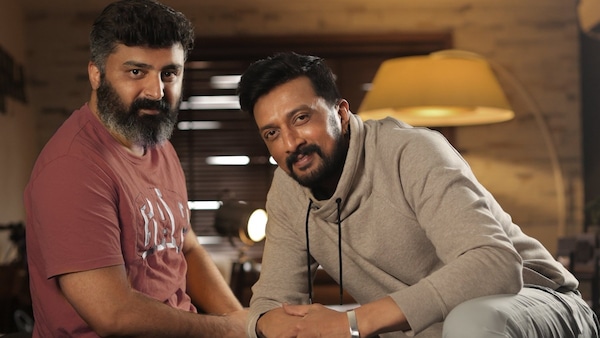
Last Updated: 06.40 PM, Jul 06, 2022
Anup Bhandari was only two films old – one a sleeper hit and the other a colossal failure – when he got the opportunity to collaborate with Kiccha Sudeep. From being talked about as the next big thing in Kannada cinema after Rangitaranga, to a lull with Rajaratha, to now counting down to the release of his third directorial, Vikrant Rona, which is being talked about globally, it’s been quite a journey for the techie-turned filmmaker. “When Rangitaranga happened, it took us a while to understand that we were successful and in demand. In fact, Rangitaranga’s success made me even more humble, because all of sudden I had people mobbing me and wanting to take pictures with me, etc. This is rarely ever the case for a director, unless, of course, you are an actor and filmmaker. I had this added pressure of being nicer than I actually am (laughs), because I felt that I should not let these people down. When Rangitaranga released, I had gone to Nandini theatre, where nobody recognized the team and the management had to tell members of the audience who we were. The next time I decided to go to Nandini theatre, it had shut down by then, but I had to get out of my vehicle as I was feeling a little uneasy and under the weather. Suddenly, there were hundreds of people running towards me, all of who wanted a picture with me. I obliged each and every one because this is something we all want and enjoy. It is only when people recognize your success that you feel successful. At that moment, I found the strength to take those 100-odd pictures, because this is what we had been working towards – for people to appreciate our work,” reminisces Anup, speaking to OTTplay during his drive from the dubbing studio to a promotional shoot of Vikrant Rona on a popular television show.
Once Rajaratha happened, things took a totally different turn, says Anup. “When Rangitaranga became successful, the reason behind it was that apart from the fact that it was different from the films that were coming to theatres at that point, it was also told in a different way and wasn’t like typical commercial cinema. Our takeaway from that was more of how we told the story was what worked for audiences, rather than what we told. Even though it was told differently, it had all the ingredients that audiences wanted like emotions, thrill and suspense. While working on Rajaratha, there was a strong story to begin with, but unfortunately, we focused so much on how to tell the story that we lost its essence along the way and there was a disconnect. Success gives you the confidence to try out new things but failure teaches you that you have to make sure that you deliver what the audience needs and not what you think can become successful. There is a challenge of getting the right combination of what you want to do and what the audience wants. That balance is something I have tried to get in Vikrant Rona and that’s a lesson I have learnt through Rangitaranga and Rajaratha,” he explains.
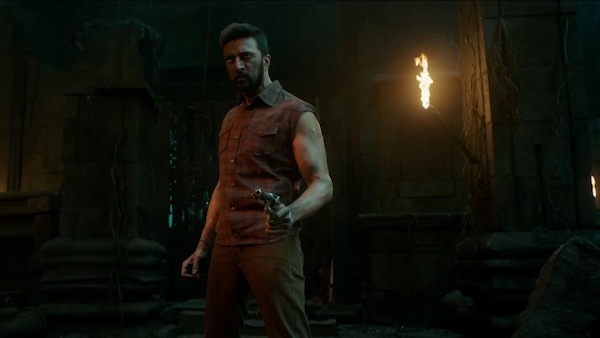
And yet, Anup also believes that no matter the technical brilliance onscreen, if the story does not connect, then people won’t accept the film. “I strongly believe that there have been bad films that became successes, but there hasn’t been a single good entertaining movie that’s been a failure. I added the word entertaining there, because good films have failed, good entertaining films have not, at least in Kannada. That’s my belief in the audience that if it is entertaining and made well, it will never fail. That is the confidence with which we have made Vikrant Rona,” he adds.
Since the film went on floors in 2020, a lot of conversations have been about the world of Vikrant Rona that was created with elaborate sets, etc. One wonders if the filmmaker ever worried if the vision of this world that was in his head could be effectively translated for the screen? Normally, when you talk about big-budget cinema, it is about foreign locations, massive action blocks, etc. Here, Anup has created a whole new world. “For me, the most difficult part is writing; it scares me. There have been days together when I have just stared at a blank page. Once I manage to write it, everything falls in place. I don’t know from where I get this confidence, but when I directed Rangitaranga, I had never directed anything prior to that. I had not assisted anyone or visited a film set in many years. It was totally new experience. But I knew that I could pull it off. It is that same confidence that I had with Vikrant Rona. The vision was big and there were a lot of things that we were doing for the first time. But I have a good team, be it the art director, DOP, editor, colorist, etc., they are a bunch of extremely talented people. More importantly, they align with my vision of what I want. For me, trying to push boundaries is something I look at when I am making a film. If you ask me to shoot in the streets of Bengaluru, I will probably find it very boring; no offence to the city, but there’s nothing new I can do there. There are only so many ways in which Bengaluru can be presented. But when I am creating a new world that makes it a lot more interesting in the way I want to frame the shots, move the camera; there’s a lot of freshness waiting to be explored. This whole world is something that was in my head and I wanted to present it to audiences the way I see it,” says Anup.
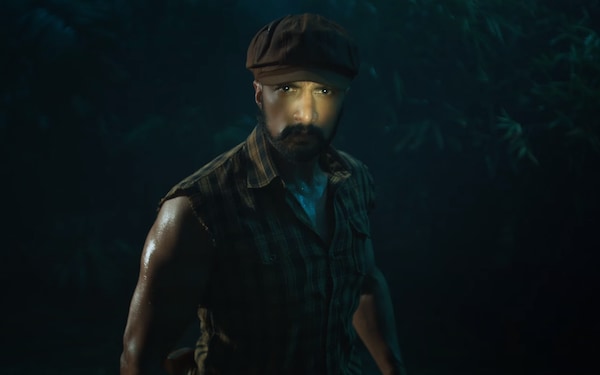
Creating the world of Vikrant Rona came with its own set of challenges, starting with the fact that most of his team members had never worked on stuff like that. “Trying to get them to do something they have not done ever is a challenge in itself. For instance, we wanted to put massive sets for the film and recreating nature is the toughest part. You can put up sets of buildings, because those are man-made and easier to replicate. With nature, the moment it starts looking fake, your whole scene falls apart. The first challenge was to create a forest, for which we watched movies in which they failed to put up good sets. We wanted to understand why they failed. Like for instance, comparing a real forest with the set; the ground level in a jungle will not be even, the texture of the trees and leaves will have a lot of detailing, etc. Once we understood the task ahead, I sat with my art director Shivakumar and had discussions on the kinds of plants we needed to create the forest. We used a bunch of real trees, but also made moulds of them and used them as well on the set. The focus was to make everything look real. We planned it in such a way that the set could accommodate different environments – so we had a stream, a waterfall, trees, a place to play cricket within the forest. We were not just creating a huge set, but also being efficient in how to properly make use of all the resources at our disposal. But then when you are working with a big budget, you have this fear of going overboard, so we needed to plan and execute things perfectly,” Anup elaborates.
Vikrant Rona, adds the director, has been completely shot on sets, everything that’s seen in it has been man-made, including a massive ship of about 80 feet by 40 feet and at 20-25 feet height and another set for a rain fight, where the action would take place amid rain, but with fire also around. “When I wrote this scene, it was as simple as saying there’s rain and there was fire. But creating that was a challenge, because we did not use VFX for that and instead had rain machines and fire created with gas, so that it would not get extinguished with the water,” says Anup. Wouldn’t it have been easier to create these effects with computer graphics? “I wouldn’t say that I am not a big fan of VFX, but I don’t trust people that easily. I wasn’t very happy with some of the graphic work that had been done and I wasn’t sure if we would be able to accomplish a lot of things. Having said that, Vikrant Rona is still a VFX-heavy film. We have used computer graphic extensions for the forest, but the main part of that set had to be created manually because there is a lot of physical interaction with the elements there. It is very difficult to recreate that with VFX, and if you do, those interaction points may look fake. There are sequences that are completely done on VFX or are heavily reliant on those effects, but that came along a little later when I found the right team to deliver that work and bring the kind of realism that I expect from a VFX shot,” he says.
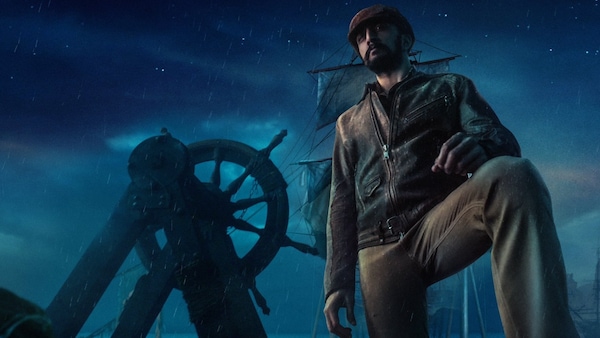
But is fantasy the filmmaker’s favourite genre? Vikrant Rona belongs to it, as will his next two films with Sudeep as well, Billa Ranga Basha and Ashwatthama. Is this his way of letting his imagination run wild and unleash the inner child? “I love creating worlds; even with Rangitaranga, athough I had a small budget, I wanted to create a world, this place Kamarottu, where the story unfolds. I wanted to bring in the culture of south Canara in my own way. Probably if I had the budget, I would have done it in a bigger way. For instance, in the climax, I actually wanted to shoot it at a different location, at night and with rain. But since we didn’t, we shot at an open ground and during the day. I had this dream ever since my first film, but was constrained by budgets. Once I was freed of those shackles, I have been trying to live my dream of wanting to create these different worlds. For me, cinema is an audio-visual medium; I want to convey a lot of my stories through visuals. I am not saying that dialogues are not important, but I want to use the camera to tell my story. In Vikrant Rona, there are a lot of sequences that play out in silence. There will be the background music and any other sound effects, of course, but there are no dialogues,” says Anup.
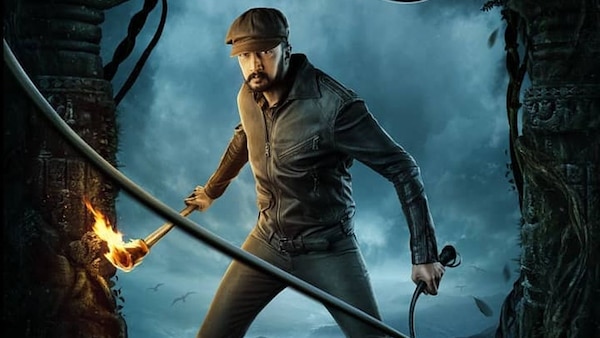
This film is the result of four years of effort. Anup and Sudeep were meant to collaborate on Billa Ranga Basha first, but then decided to put that on hold and focused on this one. In between, Anup handled the Kannada dubbed version of Dabangg 3 in which Sudeep was the antagonist, writing the dialogues and lyrics, etc. Anup still addresses Sudeep as ‘sir’, but there must be a certain comfort factor, considering they are looking at doing multiple projects together? “The first time I got to know about Sudeep sir was, maybe 26-27 years ago, when I came across a picture of him in my dad’s office. Sudeep was doing a TV serial for my father back then. I wondered why he was not doing a film with Sudeep, considering he has a good personality. That was my first introduction, so to say, with him. My first proper meeting, beside a casual hi-bye at an event in Mysuru, was when he came to launch the trailer of my short film in 2010. He was quite impressed and during our conversation I told him that I’ve wanted to do a film with him for a long time. He was quite gung-ho, although I still don’t know if he actually meant it or had just said it to make me happy back then. I was still a software professional, and returned to the US, where I continued to make short films and then later came back to do Rangitaranga. My dad’s policy has always been to not help us with his connections in the industry; he wanted us to forge our own path. I wanted Sudeep sir to watch Rangitaranga, but he couldn’t back then. Eventually, when I was making Rajaratha, he called me about a cricket tournament that he was organizing with filmmakers and actors and wanted us to be a part of it. During the event, he appreciated the song and trailer of Rajaratha and invited us home. This is when we discussed the possibility of working together seriously. Later, after the film came out, he watched it and called us over to his place again, because he appreciated it. He understood that the writing could have been better, but as far as the presentation of the film was concerned, he loved it and that is why he said that we ought to collaborate. It’s been more than four years since then; it’s been a long and fruitful journey. We’ve had some great times working together. It takes a little time to understand the kind of person that he is, the work ethics that he has and get used to it. The only thing that he wants from a filmmaker is clarity. The moment you have answers to all his questions, you can blindfold him and ask him to walk on a highway. But if that is not the case, even if it is a free-way with no traffic, he will not go. I understood that and started aligning my work in that direction,” says Anup.
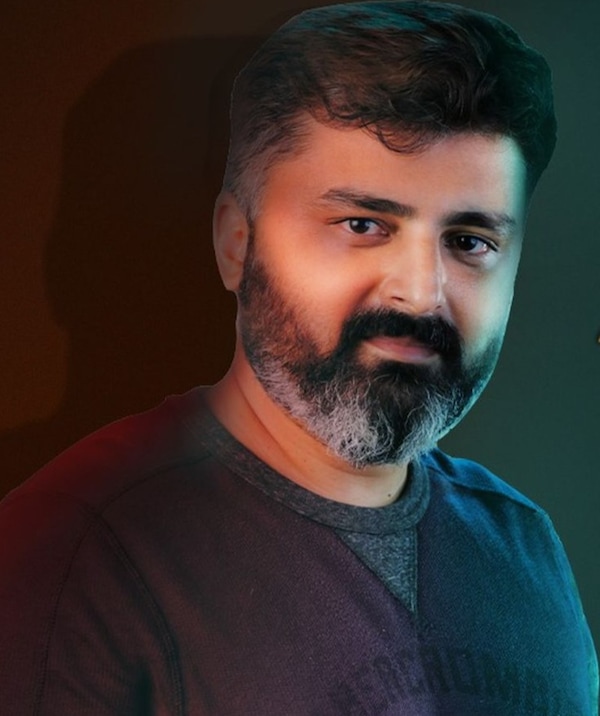
When he set out to make Vikrant Rona, though, it was not meant to be as massive as it is today. It was a big film meant for Kannada audiences and has grown in stature since. What’s the feeling now? “Whenever my film is ready for release, I have no time for any emotions, because I am constantly working. It is only when you sit idle that you have these thoughts coming into your head. The only time I will have feelings – whether it is nervousness or excitement – is before the first show. That is when you have done your job and are waiting for people to react. So, until then, I think I am kind of oblivious to everything,” he signs off.
Subscribe to our newsletter for top content, delivered fast.

